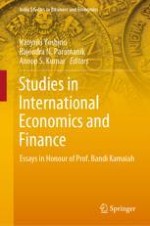2022 | OriginalPaper | Buchkapitel
An Assessment of India’s Current Account Sustainability and Adjustment: A Nonlinear Framework
verfasst von : Archana Kulkarni
Erschienen in: Studies in International Economics and Finance
Verlag: Springer Singapore
Aktivieren Sie unsere intelligente Suche, um passende Fachinhalte oder Patente zu finden.
Wählen Sie Textabschnitte aus um mit Künstlicher Intelligenz passenden Patente zu finden. powered by
Markieren Sie Textabschnitte, um KI-gestützt weitere passende Inhalte zu finden. powered by
